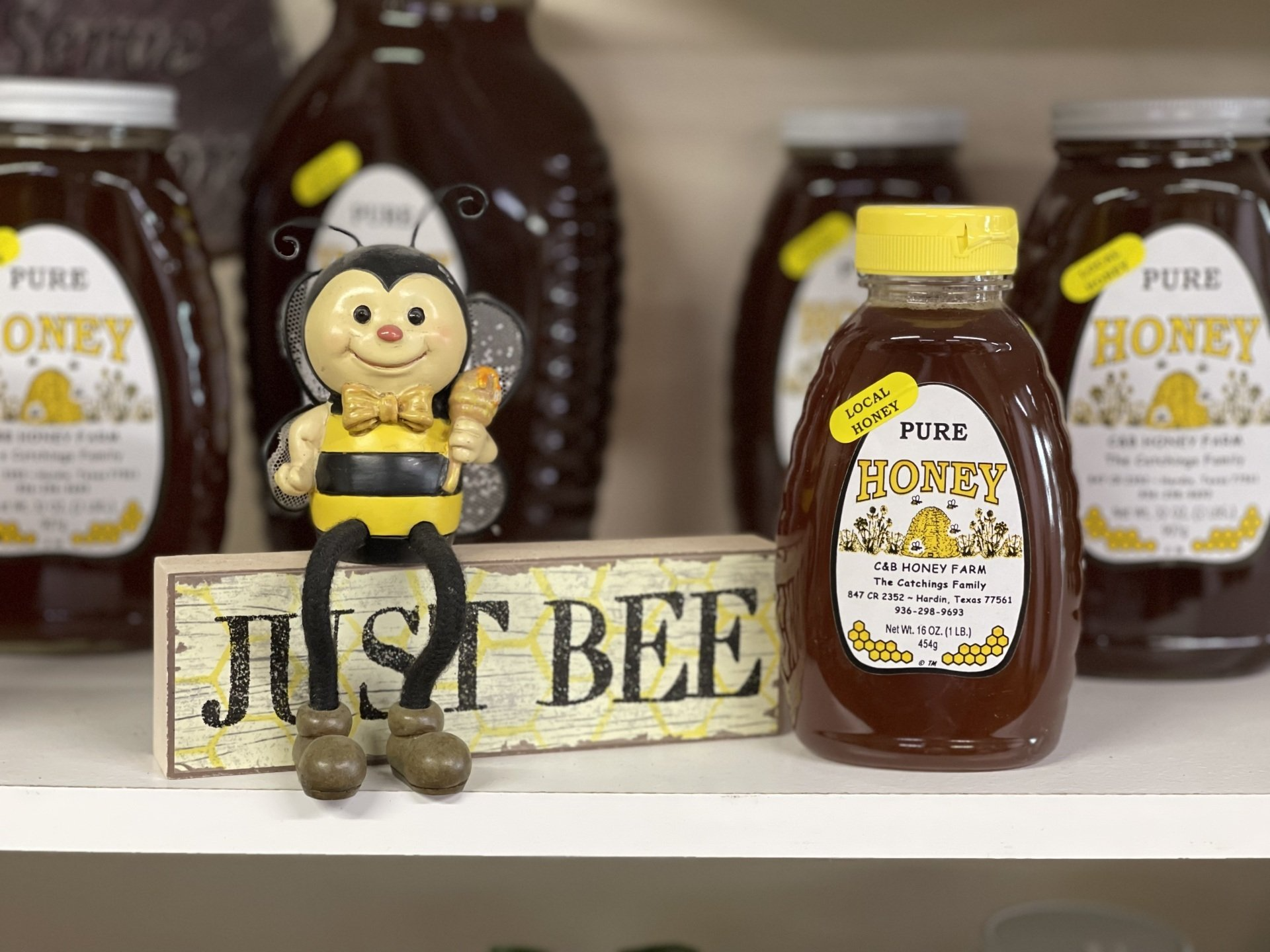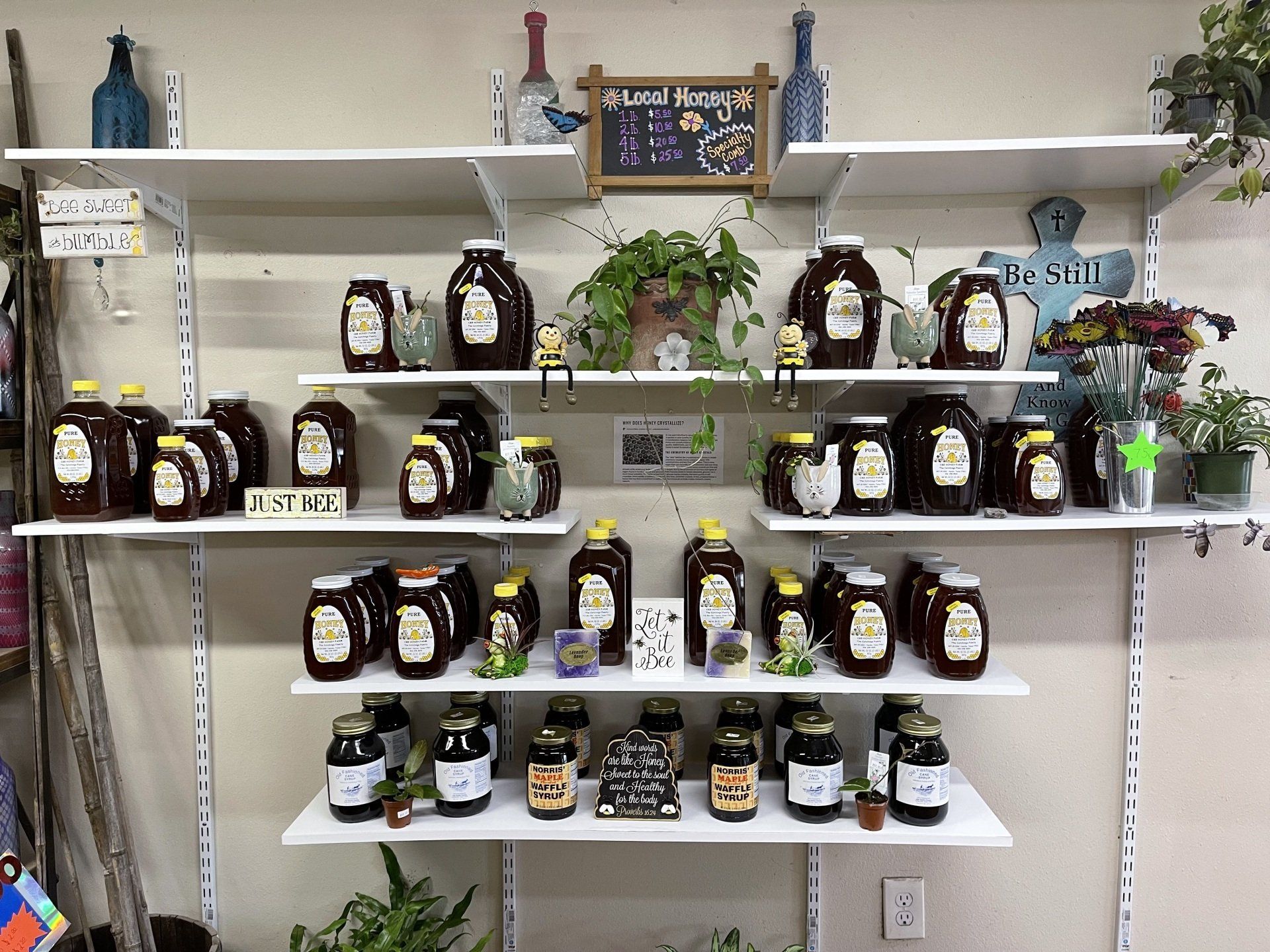FOR FASTER SERVICE CALL
DELIVERY BY DRIVEWAY FRIENDLY TRUCK
WELCOME TO DONATH'S GARDEN WORKS IN BAYTOWN, TEXAS
Donath Garden Works
is locally and family owned, located in the heart of Baytown. We offer many custom soils, mulches, sand, base, stone, trees, and shrubs
for Home Gardeners and Contractors alike!
RAW LOCAL HONEY
Raw Local Honey
You can always find raw local honey at Donath's.
When you embellish interior spaces with houseplants, you're not just adding greenery. These living organisms interact with your body, mind and home in ways that enhance the quality of life.
BREATH EASIER
When you breathe, your body takes in oxygen and releases carbon dioxide. During photosynthesis, plants absorb carbon dioxide and release oxygen. This opposite pattern of gas use makes plants and people natural partners. Adding plants to interior spaces can increase oxygen levels in your living space.
INCREASE HUMIDITY
As part of the photosynthetic and respiratory processes, plants release moisture into the atmosphere, which increases the humidity level in the air around them. Plants release roughly 97% of the water they take in. Place several plants together, and you can increase the humidity of a room, which helps keeps respiratory distresses at bay. A European study indicates that using plants in interior spaces decreases the incidence of dry skin, colds, sore throats and dry coughs.
PURIFY AIR
Plants remove up to 87% of volatile organic compounds (VOCs) from interior air every 24 hours, according to recent research. VOCs include substances like formaldehyde (present in rugs, vinyl, cigarette smoke and grocery bags), benzene and trichloroethylene (both found in man-made fibers, inks, solvents and paint). Benzene is commonly found in high concentrations in study settings, where books and printed papers abound. Why not place a leafy green house plant (or two!) on your bookshelf?
IMPROVES HEALTH
Adding plants to hospital rooms has been shown to speed recovery rates of surgical patients according to researchers at Kansas State University. Compared to patients in rooms without plants, patients in rooms with plants request less pain medication, have lower heart rates and blood pressure and report experiencing less fatigue and anxiety. Many such patients are actually released from the hospital sooner than those that haven’t enjoyed the benefit of lush green roommates.
SHARPEN FOCUS
A study at The Royal College of Agriculture in Circencester England, found that students demonstrate 70% greater attentiveness when they receive instruction in classrooms containing plants. The same study also revealed that attendance was also higher for lectures given in classrooms with plants.
Donath Garden Works right here in good old Baytown, TX has exotic tropical house plants, carnivorous plants, annuals, herbs, vegetables, and perennials in stock!
VISIT US TODAY
Content, including images, displayed on this website is protected by copyright laws. Downloading, republication, retransmission or reproduction of content on this website is strictly prohibited. Terms of Use
|
Privacy Policy









